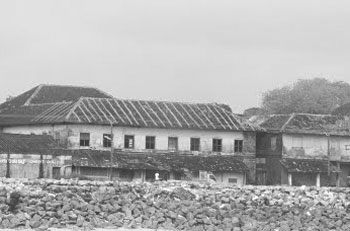The capital of erstwhile British Malabar, Thalassery has a prominent place in the history of Malabar as a military fort, trade center, port and court of justice.
Thalassery is one of the oldest municipalities in Kerala. The name of Thalassery is recorded as Thalassery, Tellicherry, Thalakacherry, Thalascherry etc. in old records. There is no clear evidence on the origin of these names.
One opinion is that Thalassery was the capital (thala) of many cheris (habitations) and therefore it got the name Thalacherry. Another version is that it was the Headquarters (thala) of several offices (kacheri) in North Kerala and hence it got the name Thalakacheri. It is also believed that the place was one among the ancient ‘Thali’s (Brahmin habitation) and therefore it got the name Thalissery which was gradually transformed to Thalassery. Whatever be the truth of these origins, the city of Thalassery has acquired an important position in the history of Kerala.
There is no doubt about the fact that Thalassery, part of the erstwhile Kottayam Taluk, grew into become an important commercial centre under the European rule. The Thalassery shot into prominence in several fields under the European rule.
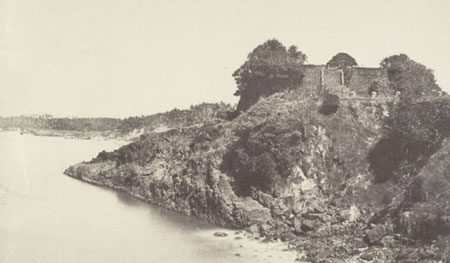
The city grew as a centre of union for the Chirakkal, Kottayam and Kadathanad Kingdoms, as the area of activity of the Randu Thara and Kurungod local rulers and also as a port town. It is also considered that the growth of Thalassery as a commercial centre took place after 16th Centuary.
In the years 1704-05, the descendants of the Udayamangalam Kingdom who were then estranged with the Kolathiri Kings, attacked the British trade centres at Thalassery along with Kurungoth Nair, a local leader of Thalassery area. Kurungoth Nair also demanded his share on the rice and other commodities imported through Thalassery port. These attacks made the British think about the security of their trade centre. They requested Vadakkum Koor Kingdom for the construction of a Fort. The King himself came to Thalassery for laying the foundation stone of the Fort. When construction of the Fort was completed, the Prince of Vadakkumkoor at Kolathunadu, officially handed over the Fort and the adjoining land to the British on 20th August 1708.
The manual of administration of Madras Presidency Vol. II 1885 says the old name of this place is 'Shwetaranyapuri. 'Shweta' means white, 'Aaranya' means forest and 'puri' means town. There is also a mention is historical records that Tiruvenkad later became Thiruvangad. David Smith of the department of religious studies of Lancaster University writes in his book 'THe Dance of Shiva' that this was the place where the Acharya of Upansihads 'Shwetaketu' lived here which is why the place got the name Shwetarangapuri.
The fort build by the East India Company is an Thiruvallappan hill which was owned by Punolil Mussad. Thalassery actually started progressing after it became a trading centre in the old kottayam taluk under British rule. This happened in the 16th century.
There are some signs of Brahmin domination in the center of the town. But there is no mention of Thalassery in the old 'Talis' of Kerala.
Thalassery is one of the citadels of Kerala history. The Kottayam King and the Kolathiri are said to have fought over this little piece of land. The Dharmadam also saw the entry of the British soldiers who were stopped by Ali's army. The injured English soldeirs also captured one of Ali's fort in Dharmadam. Later Ali's army with the help of Udhaya Varman took over Dharmadam again. The British are said to have been keen on capturing the Dharmadam cove because of its beauty. Later the Dharmadam cove passed on from the British to Orkateri Keyi. The remains of more than one building are found on the island here. There is also a religious institution in the south of the island where kings are said to have rested. The island covered with greenary the beautiful rocks and the far away sea are being eyed by the tourism department as an ideal tourist spot.
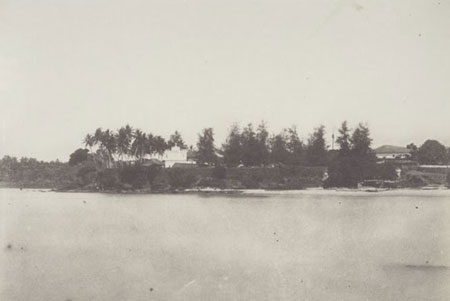
Thalassery was a favourite place of the westerners. All their strategic experiments were staged on this land. They used the town for their commercial purposes. The warehouses on the seashore near Thalasserry Fort was meant for storing various commodities for export and import.
In 1682, the French vacated the trade centres they established in Thalassery as they were under loss and also because they were troubled by the British stationed at the nearby Dharmadam. On hearing this, the British officers at the Dharmadam trade centre, Chaise and Michel met Prince Kolathiri and got the trade centre vacated by the French.
The best quality cardamom in the world was grown at the foothills of Perya Pass at Wayanad and Thalassery was the nearest port from Perya Pass.
It is said that Gandhiji first came to Thalassery on August 19, 1920. This may not be right as he actually had come to Kozhikode along with Shoukath Ali to participate in the Khilayath Movement and stopped at Thalassery platform to talk to the people. Moyarati Shankaran wrote about this in his autobiography. "Both leaders stood at the door of the compartment and spoke to the people. Gandhiji's cheerful face, his thin body and his attire which hardly touch the knees attracted the crowds attention as did Shoukath Alis large size and his loud voice".
Gandhiji again visited Kerala in 1934. This was in connection with the unveiling of the photo of Mathrubhumi founder K. Madhavan Nair and his participation in Guruvayoor Satyagraha. Some leaders of Thalassery including T.V.N. Nair and Chandroth Kunjiraman Nair wrote Gandhiji requesting him to visit Thalassery also. His visit witnessed a protest by Sanadhani Dharma Parivakshiri Activist. He stayed at the house of Shir V. Narayan Nambiar. The treasurer of the Gandhi welcome committee Dr. T.V.N. Nair gave him a purse of Rs. 775 and one anna at the public meeting.
The speech of Gandhiji at Thalassery has been published as "untouchability within untouchability". Gandhiji started his speech like this "I thank you for the purse and your generosity. I have come here to request you to get rid of untouchability from your minds. He also contemned the atrocity at Ezhoth and spoke about the need to allow Harijhans into the temple. In Ezhoth the Nairs and Thiyyas had beaten up Harijhans for refusing to give paddy on the Tulapat Day. Gandhiji's next visit was to the french territory of Mahe.
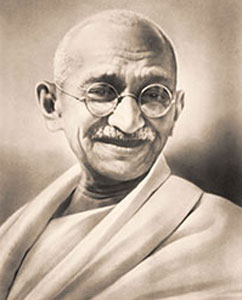
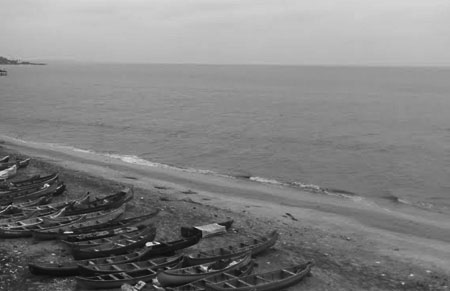
Thalassery was witnessed to a great struggle for freedom in 1940. The leftists in the congress decided to protest against the torture and the oppression of the Britishers and organised a massive meeting at the sea shore near the St. Josephs School. They violated the prohibitory orders imposed by the British and were addressed by K. Dhamodharan, P.K. Madhavan and P.K. Krishnan. The British army clashed with the protestors which led to firing. Social worker and Edakad School teacher Abu Master and Great Durbar beede Company worker Chatukutty died in the firing. Others like T.V. Ramunny and C.V. Balan were imprisoned. The memorial rose at Jawahar Ghat, the sight of the protest for the martrs.
The volunteers led by kelappan in their effort to break the salt laws passed via Thalassery on their way to Payanoor from Kozhikode. They were given a great welcome in Thalassery. Moyarath Shankaran and C.H. Govindhan Nambiar accompanied the protestors. The salt satyagraha at Thalassery was led by Parameshwara Tirumunbu.
The Keyis brought about the complete reformation in the economy of Kerala in the first decades of the 18th century. They establish links between Kerala and foreign countries in the commercial front. In Parsi 'Keyi' means Leader. The first of the Keyis, Alupikakka reached Thalassery from 'Chowa' near Kannur for commercial purposes. He exported copra, pepper, sandalwood, cardamom and other items to foreign countries and received a lot of encouragement from the Dutch. After he died his nephew Moosakakka became his successor. Moosakakka created canals in Alapuzha and has several boats in which he carried his commodities.
The 'Kolathiri' kings were very happy with Moosakakka and presented him some land and teak forest in Alapuzha. He constructed the 'Odathil Mosque' in Thalassery using the teak from these trees. Its roof is made of bronze and metal. Only the bodies of the keyis are buried here.Moosakakka made an agreement with East India Company. When he died his body was buried in the Odathil mosque. After his death the Keyis divided into four branches which are 'Vorkatari', 'Valiapura', 'Pudhiyapura' and 'Kaloth'. Mayankutti of the Valiapura branch was a scholar and wrote Quran Tafsir.
The Keyis have lot of wealth not only in Kerala but also in Tamilnadu, Karnataka and Mumbai. The Keyis also made marital ties with the royal family of Arakkal. The family members were constructed several mosques all across Kerala. Thalassery has benefited a lot from the presence of the Keyi dynasty.
The Keyi houses in Thalassery are examples of a distinct Kerala style architecture for house construction. A majority of such houses have disappeared in the last few decades. Though this could be attributed to the collapse of the joint family system, it also points to the extinction of a valuable architectural model.
